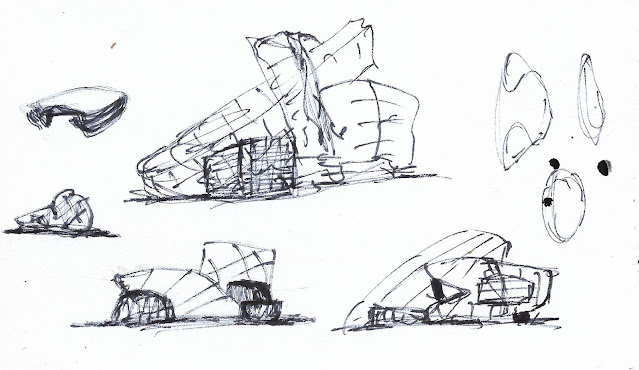Tadao Ando’s Philosophy: Why Less Is More in Concrete
The Modern Art Museum of Fort Worth in Fort Worth, Texas (United States)
Michael Barera, CC BY-SA 4.0 <https://creativecommons.org/licenses/by-sa/4.0>, via Wikimedia Commons
Japanese architect Tadao Ando is renowned for his minimalist approach to design, an aesthetic that embraces simplicity, purity, and harmony with nature. His unique architectural style has earned him global acclaim, with projects spanning across continents, from Japan to Europe and the United States. Ando’s designs are distinguished by their use of raw concrete, the interplay of light and shadow, and a profound respect for the natural environment. But behind his minimalist creations lies a deep philosophy—one that believes in the power of simplicity and the profound impact of "less" in design.
In this article, we’ll explore Tadao Ando’s philosophy of architecture, his approach to using concrete, and why, for him, less truly is more.
The Minimalist Mastermind
Tadao Ando’s career began with a self-taught foundation. Born in Osaka in 1941, Ando was not formally trained in architecture but instead learned by traveling, observing, and practicing design on his own. His early life as a boxer before becoming an architect gave him a unique perspective on discipline, focus, and the importance of precision.
Ando’s architectural philosophy is heavily influenced by Zen Buddhism, an Eastern philosophy that emphasizes mindfulness, simplicity, and the quiet beauty of the present moment. His designs are marked by restraint—avoiding excessive decoration, over-complication, or unnecessary ornamentation. This approach is known as minimalism, and Ando has become one of its most influential advocates in the world of architecture.
Concrete: A Medium for Simplicity and Beauty
One of the most striking aspects of Ando’s architecture is his masterful use of raw concrete. In a world where concrete is often used for its practicality and utilitarian purpose, Ando transforms it into something that resonates with spiritual depth and beauty. His approach to concrete is not about creating cold, impersonal structures but rather about harnessing its rawness to evoke emotion and transcendence.
Why concrete? For Ando, concrete is not just a building material but a canvas that allows him to express purity and simplicity. Its tactile, earthy nature gives Ando the flexibility to create spaces that are minimalist yet warm. He contrasts the often harsh, industrial reputation of concrete with his focus on the spiritual and emotional effects of space. For Ando, the material is not something to be hidden or softened—it becomes a medium that engages the senses in profound ways.
The Role of Light and Shadow
In many of Ando’s designs, light plays an essential role in bringing the space to life. He has often spoken about his fascination with how light interacts with surfaces, particularly raw concrete. He believes that light is one of the most important elements in his work, creating dramatic contrasts and textures that change throughout the day. This interplay between light and shadow transforms the architecture, shifting the perception of a space over time.
Ando’s philosophy also extends to how the design of the building encourages people to interact with light. The use of simple, geometric forms and open spaces allows natural light to penetrate deep into the interiors. For instance, his famous Church of the Light in Osaka is a stunning example of how Ando uses light to create a sense of serenity and spirituality. A cross-shaped slit in the concrete wall allows light to flood the interior, casting a beautiful, ethereal glow that changes with the movement of the sun.
By embracing the natural qualities of light, Ando does not just design structures that are functional but spaces that evoke emotion, transcendence, and contemplation. The simplicity of his design allows the light to become the artwork, while the raw concrete background acts as a frame.
"Less Is More": The Essence of Ando’s Philosophy
At the heart of Tadao Ando’s design philosophy is the concept of "less is more." This phrase, famously coined by modernist architect Ludwig Mies van der Rohe, resonates deeply with Ando’s approach to architecture. In Ando’s case, it means removing the excess—whether it’s unnecessary decorations, superfluous details, or overly complex structures—in favor of simplicity that allows the architecture to speak for itself.
Ando’s architecture often involves clean lines, open spaces, and a harmonious connection to nature. There’s a beauty in his restraint, where every element in his design is deliberate and purposeful. By removing the non-essential, Ando’s spaces are meant to engage the mind and soul, encouraging contemplation and connection to the environment.
This minimalist approach also extends to the functional aspects of Ando’s designs. For instance, he often prioritizes the experience of the user over ornamental elements. His structures are designed to be calming, reflective spaces that allow people to find peace and clarity. This philosophy is central to Ando’s work on spiritual and cultural buildings, where the purpose is not just to house activities but to create a space for introspection and connection with something greater than oneself.
Architecture as a Dialogue with Nature
Another key aspect of Ando’s philosophy is his desire to create a dialogue between architecture and nature. He believes that architecture should not disrupt or dominate the natural world but instead work in harmony with it. Many of his buildings are designed to blend seamlessly into their surroundings, using natural materials, creating green spaces, and incorporating elements such as water and light to establish a connection between the built environment and the earth.
A prime example of this philosophy can be seen in Ando’s Naoshima Contemporary Art Museum on Naoshima Island, Japan. The museum’s architecture is integrated into the landscape, and its concrete forms are softened by the surrounding greenery and ocean views. The museum spaces are designed not only to showcase art but to encourage visitors to engage with both the art and the environment, fostering a sense of connection and tranquility.
Achieving Spirituality Through Simplicity
While Ando’s architectural style is modern and minimalist, his work is deeply influenced by spiritual and philosophical ideas. Ando himself has often spoken about his desire to create spaces that foster a sense of peace, contemplation, and spiritual awakening. His buildings are more than just functional structures—they are designed to be transformative experiences.
For example, the Church of the Light in Osaka is a work of profound spiritual simplicity. The stark, minimalist design of the church, combined with the powerful symbolism of the cross-shaped light that cuts through the concrete wall, creates a space that invites reflection and reverence. In Ando’s words, architecture should be a place where people can find “silence” and “inner peace.”
The Lasting Impact of Ando’s Philosophy
Tadao Ando’s work continues to inspire architects and designers around the world, not just because of his mastery of concrete but because of his ability to create spaces that transcend the material and touch the spiritual. His philosophy of less is more reminds us that simplicity is not about emptiness but about creating space for deeper connections—to nature, to others, and to ourselves.
In a world that often values excess and spectacle, Ando’s designs encourage us to pause, reflect, and embrace the power of simplicity. By using raw concrete as a medium for creating tranquil, spiritual spaces, he has elevated the material to an art form, proving that less truly can be more. Ando’s work stands as a testament to the idea that architecture, when done with care and thoughtfulness, can be a transformative force in our lives.
Conclusion
Tadao Ando’s architectural philosophy shows that true beauty lies in simplicity. His minimalist designs, often built from raw concrete, emphasize harmony, light, and the natural environment. Through his work, Ando teaches us that architecture should not just be about creating functional spaces but about creating experiences that touch the soul. In his world, less is not just more—it is everything.










_1.jpg)
_2.jpg)
_1.jpg)
_2.jpg)
_1.jpg)
_2.jpg)
_1.jpg)
_1.jpg)
_2.jpg)
_1.jpg)
_2.jpg)


















.jpg)